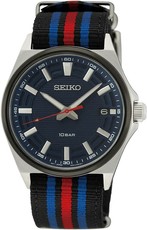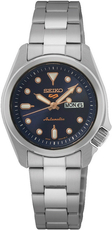1881 - the company's establishment. 1913 - the first wristwatch made in Japan. 1969 - the world's first quartz watch. 1999 premiere of Spring Drive technology. The listed milestones clearly identify the Japanese brand Seiko. Th Read more...
1881 - the company's establishment. 1913 - the first wristwatch made in Japan. 1969 - the world's first quartz watch. 1999 premiere of Spring Drive technology. The listed milestones clearly identify the Japanese brand Seiko. The cornerstone of today's large watch manufacturer was laid by a man named Kintaro Hatori, who opened a watch shop in Tokyo's Ginza district. In 1913, the first Japanese mechanical watch came out of his Seikosha workshop. Kintaro Hatori's followers renamed the company several times, with today's name Seiko making its debut on watch dials in 1924. As the brand grew, its management became increasingly aware that even the 1960 Grand Seiko legend didn't achieve the precision that would shock the world. Things changed with the advent of the Astron in 1969. The watch contained a movement with a diameter of only three centimeters, in which a quartz crystal and 76 transistors were placed. The accuracy was phenomenal. The quartz crystal showed a deviation of only 0.2 seconds per day. After this break, Seiko ran in full force. In 1977, it adopted a solar power supply, whereby the benefits can now be enjoyed by men as well as women. Seiko has no problem incorporating this ecological science achievement into massive men's chronographs, and even subtle ladies watches haven't been impoverished. Another turning point was the introduction of Kinetic technology in 1988. Popular models from a series of the same name can store the energy obtained from wrist movements in a small battery, from where it's transferred by a stepper motor to the gears and then to the hands. Recent Seiko research successes include the improvement of Spring Drive mechanical machines from 1999 and the incorporation of a GPS chip into the Astron GPS Solar travel pieces. After connecting to at least four satellites orbiting the Earth, they obtain the current time and time zone data, which they use to set the watch with atomic clock accuracy. The wide range of Seiko models includes design-successful steel, titanium and ceramic models from diving, racing to stylish elegant. For all, typical features such as affordability, Japanese meticulous workmanship and a sense of practicality. The most popular and most sought-after collections include Seiko 5 and Seiko Automatic.
...less

































